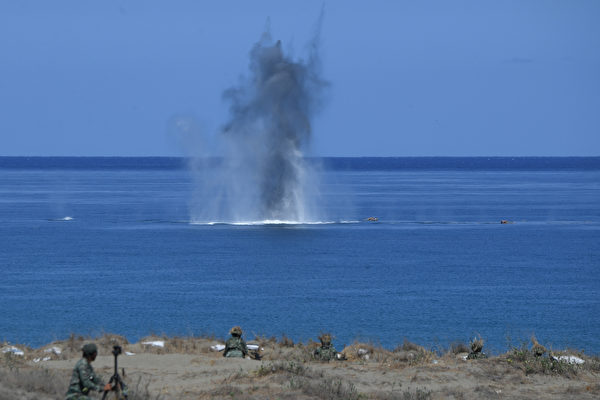On Monday, May 6, the United States and the Philippines conducted a joint military exercise in the northern waters of the Philippines, launching missiles and cannons to simulate thwarting enemy forces aimed at Taiwan.
Approximately 200 American and Filipino troops took turns guarding the coast of Laoag City in Ilocos Province. The joint force of the U.S. and the Philippines fired missiles and used artillery and machine gun firepower to deter enemies attempting to seize islands near Taiwan.
This year’s joint military exercises between the U.S. and the Philippines have been focused on islands and provinces facing Taiwan and the South China Sea. Laoag City is only about 408 kilometers south of the southern tip of Taiwan.
In Wednesday’s “Shoulder-to-Shoulder” exercise, the Philippines and the U.S. joint forces are expected to sink a retired Philippine navy ship. Other exercises include simulating reclaiming occupied islands and conducting freedom of navigation operations with France and Australia in the Philippines’ exclusive economic zone in the South China Sea.
Lt. General Michael Cederholm, commander of the U.S. Marine Corps’ Joint Expeditionary Task Force “Shoulder-to-Shoulder,” told reporters on Monday that the purpose of this exercise is to enhance the interoperability of the U.S. and Philippine forces, not targeting any specific adversary.
On April 30, the Philippines accused Chinese Coast Guard ships of firing water cannons at its supply vessels near the disputed Scarborough Shoal (also known as the Huangyan Island), resulting in damage to Filipino ships and injuries to sailors.
On Monday, Ferdinand Marcos Jr., the President of the Philippines, stated that the Philippines would not retaliate against China’s actions, in an effort to avoid escalating tensions.
Under the leadership of President Ferdinand Marcos Jr., the Philippines government has strengthened its military cooperation with the United States, allowing American troops to access more Philippine bases under the Enhanced Defense Cooperation Agreement, including facilities near Taiwan and facing the South China Sea. The U.S. and the Philippines also began joint patrols in the South China Sea last year.
The U.S. government reiterated its commitment to defend the security of the Philippines “steadfastly” under the Mutual Defense Treaty signed in 1951, protecting it from any attacks.
Although the escalating tensions between the Chinese regime and the Philippines in the South China Sea have garnered much attention, the inclusion of Itbayat Island near Taiwan in this year’s U.S.-Philippines military exercises highlights the potential role the Philippines may play in any potential conflict in the Taiwan Strait.
Itbayat Island is located approximately 100 miles south of the southern tip of Taiwan. The Philippines’ 7,600 islands provide an ideal base for U.S. anti-ship and intelligence assets, which are crucial in countering a Chinese invasion.
Major Robert Patterson is leading the forces headed to Itbayat Island. He stated, “We are here as a deterrent – we provide a credible warfighting capability.”
As tensions rise in the South China Sea, the U.S. and the Philippines launched the U.S.-Philippines “Shoulder-to-Shoulder” joint military exercise last month, with approximately 16,000 troops participating, set to continue until May 10.

